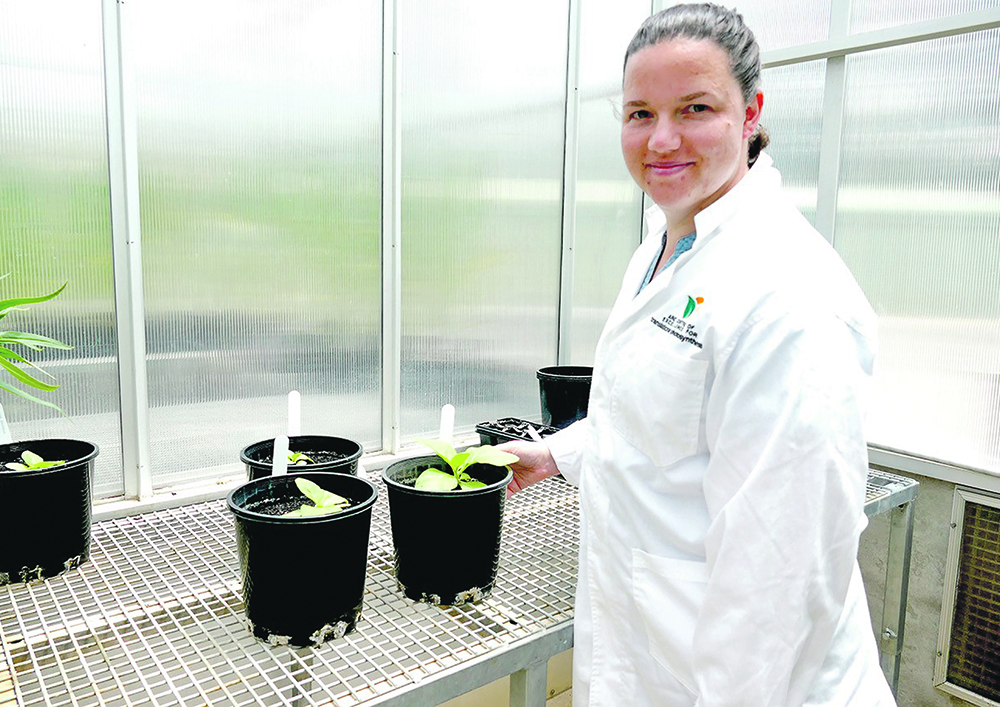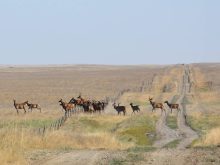Researchers determine that reducing cell wall thickness may improve photosynthetic productivity and crop production
Most schoolchildren know from science lessons that plants absorb carbon dioxide from the atmosphere. But few people realize that, to reach the interior of plant cells, CO2 faces many challenges along the way.
CO2 moves into plant cells where it is transformed into sugars during photosynthesis by enzymes. But the journey is not simple. It has to overcome obstacles and resistance, solid walls, liquid valleys and tunnels guarded by gatekeeper proteins.
A team of scientists at the Australian National University has measured the relative importance of these obstacles and produced data that may improve the absorption of the carbon to boost crop productivity.
Read Also

Crop quality looks good this year across Prairies
Crop quality looks real good this year, with the exception of durum.
“We do this in several ways, including by engineering the plants to have more porous membranes to allow CO2 to cross them more easily,” said lead author Tory Clarke with the Australian Research Council Centre of Excellence for Translational Photosynthesis (CoETP). “In this study we investigated the natural variation in CO2 diffusion into leaves and linked this with the structure of the cells within the leaves to pinpoint what is restricting it and how this varies with leaf age and position.”
The work is part of the RIPE Project (Realizing Increased Photosynthetic Efficiency), an international research project aiming to improve photosynthesis to equip farmers with higher-yielding crops.
The team used tobacco as a model crop because the plant forms a canopy like other important food crops such as soybean, cowpea, potato, and cassava.
“More CO2 getting inside the cell means more photosynthesis and higher yields,” said Clarke. “In our study, we have been able to measure the amount of CO2 coming into the leaf cells and pair that with the microscopic structure of the leaf cells to work out what is actually blocking CO2 diffusion. It’s important to understand how these barriers change through the canopy too. We can use this to model how a given alteration or improvement might propagate through the plant and impact overall yields.”
Clarke said the first barrier on the leaf surface is the stomata, which is like a doorway that can be opened and closed to allow CO2 inside.
Once open, CO2 moves in but water moves out so plants must balance their need for carbon against how much water they can afford to lose.
Once through the surface, the CO2 must cross into the cells. Each cell is surrounded by a cell wall made mostly of cellulose. The walls give plants structural integrity and shape, allowing the plant to be upright. But, at the same time, they prevent some of the CO2 diffusing through.
The next obstacle is the cell membrane, which is like a fatty bubble around the cell holding cell contents inside. It is packed with proteins that can regulate what substances pass through. CO2 is restricted as it passes through one of these protein tunnels to get inside.
Once in, CO2 must dissolve into the liquid, which again restricts the amount of carbon being accessed.
The final destination of CO2 is inside another cell called a chloroplast. It too has a membrane around it with more liquid inside. But it contains rubisco, the enzyme which converts CO2 into sugars.
“In our study, we were able to measure some of these parameters, such as how thick the cell walls were and the surface area of chloroplasts available for CO2 diffusion,” said Clarke. “Surprisingly, we didn’t see much relationship between available chloroplast area and the ease of CO2 diffusion, but cell-wall thickness increasing as leaves age was linked to reduced amounts of CO2 making it into the chloroplast. Older leaves photosynthesize less than younger leaves, and the rate of photosynthesis was a good predictor of the ease at which CO2 diffuses in.”
She said their results suggest the cell wall is an important barrier to CO2 uptake into leaves. She pointed out that many crop species have thin cell walls compared to their wild cultivars, but the data suggested that reducing cell wall thickness even further may translate into improvements in photosynthetic productivity and crop yields.
“Other targets for improving CO2 uptake by leaves include making the cell membrane more porous and improving how CO2 moves through the liquid parts of the cell.”
She said future work involved adding in more protein tunnels, which will allow the carbon to more easily cross the membrane.
“We are targeting the liquid resistance by improving how much CO2 can dissolve into the liquid parts of the cell. For the cell wall, we’re experimenting with altering the composition so that the cells remain sturdy, but CO2 can more easily move through them.
“An added bonus we’re hoping to capture in our manipulations is that, by making it easier for CO2 to traverse the barriers, we’ll actually need less carbon coming in through the stomata as the plant can utilize more of it.
“This means our plants could be made more drought resistant, as well as having higher yields because they can close their stomata more and prevent water loss, while still converting more CO2 into sugars.”
Clarke said the study allows them to make predictions about how reductions in barriers to CO2 will be propagated through the canopy and how that will impact yields.
The research paper was published in the Royal Society journal Interface Focus.
















